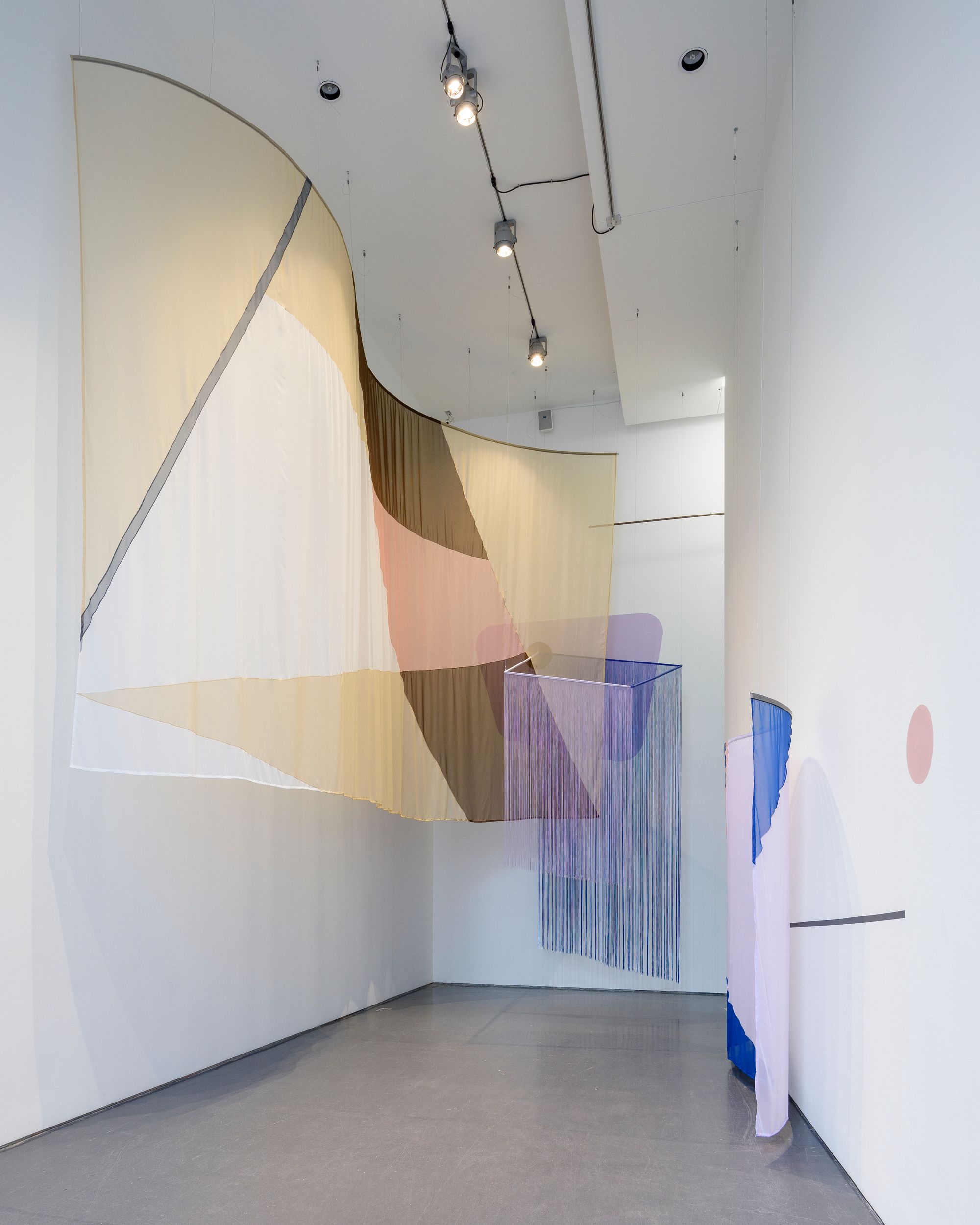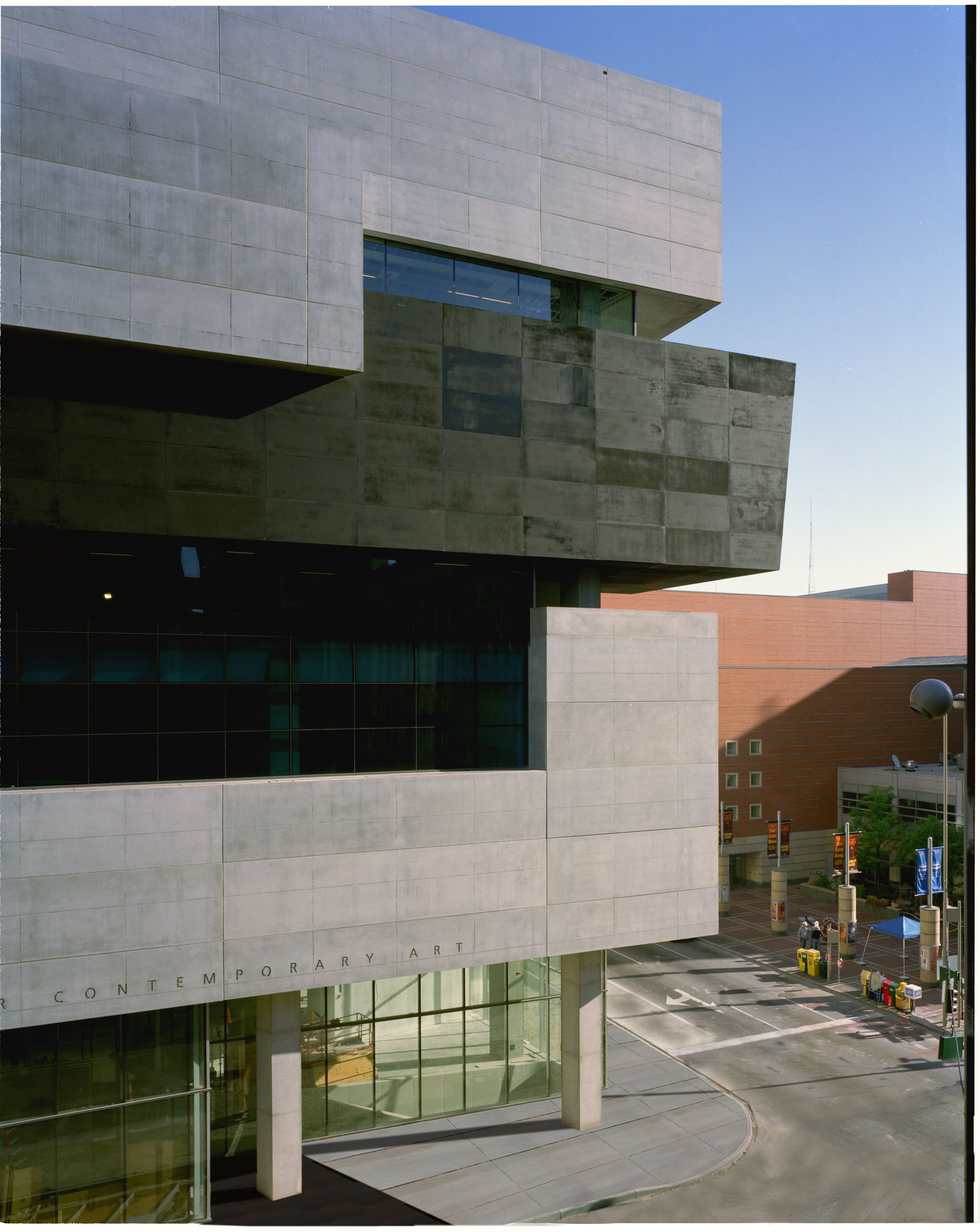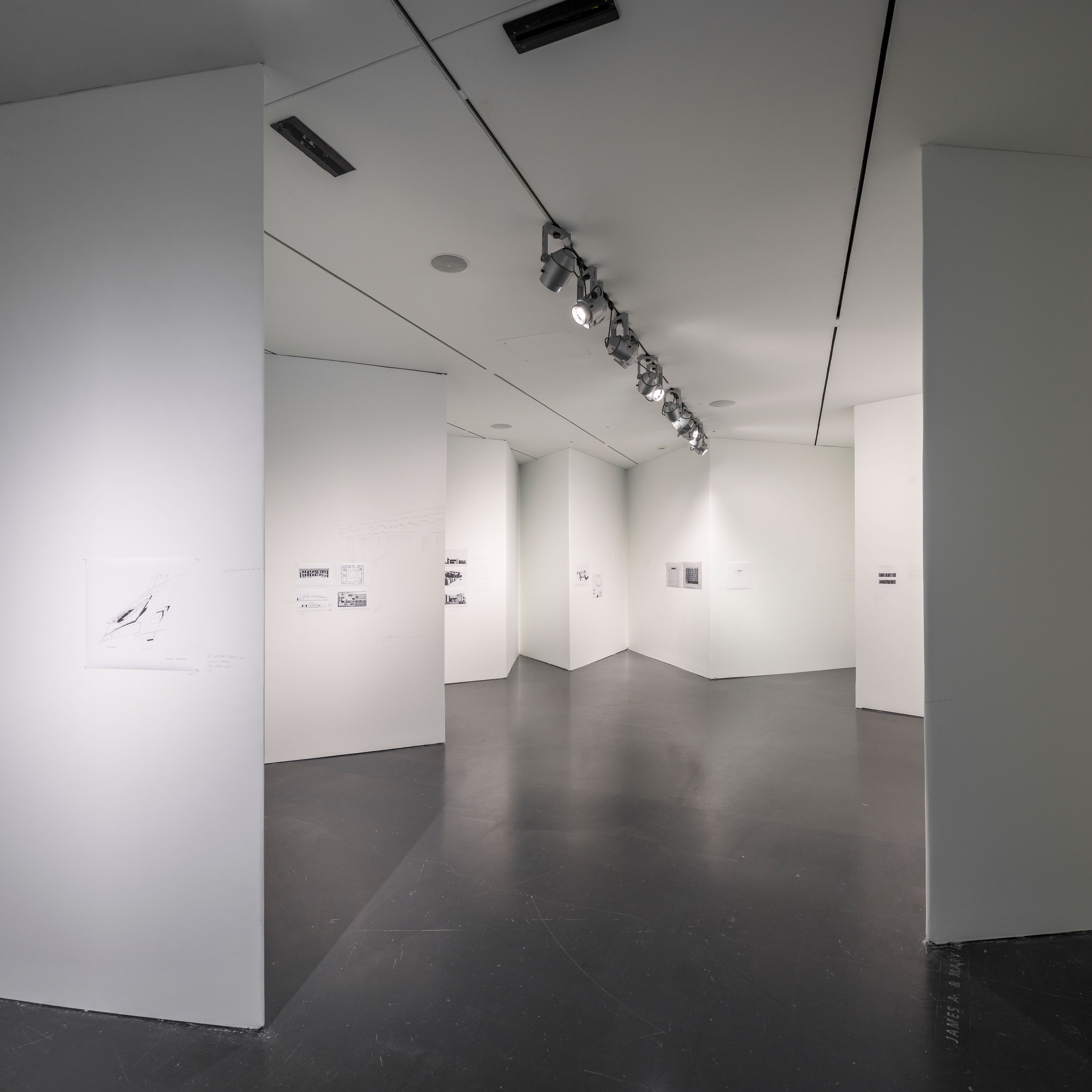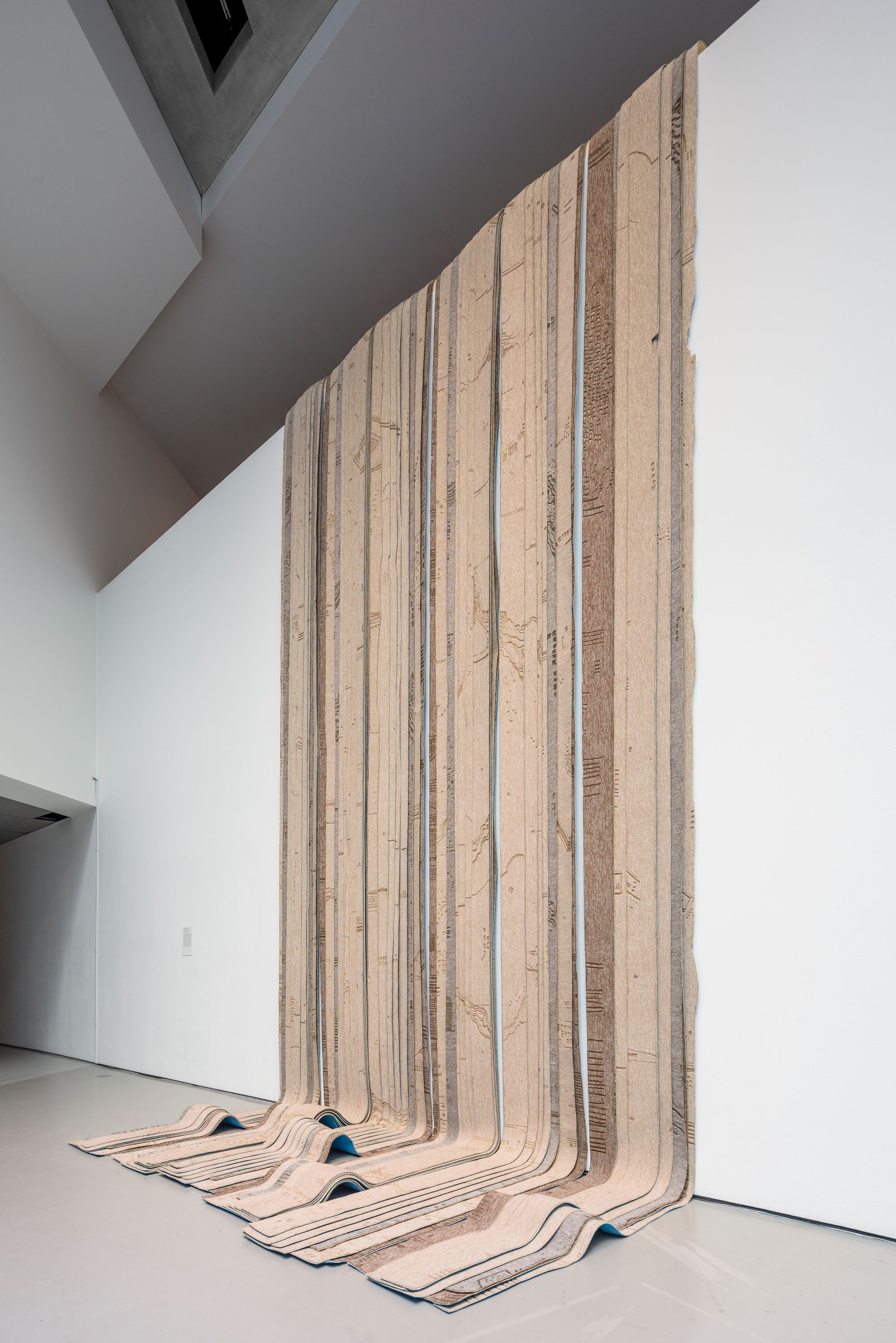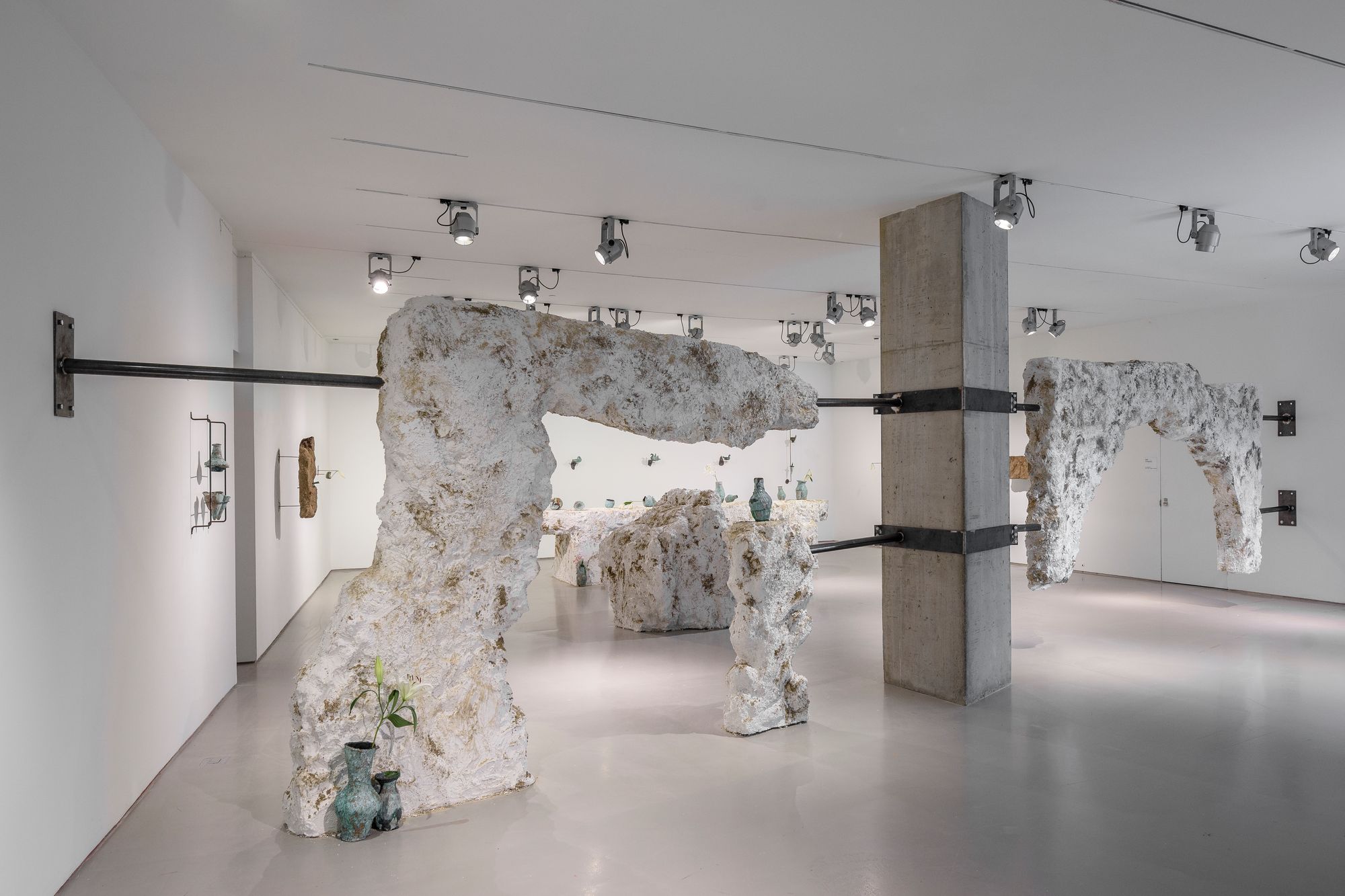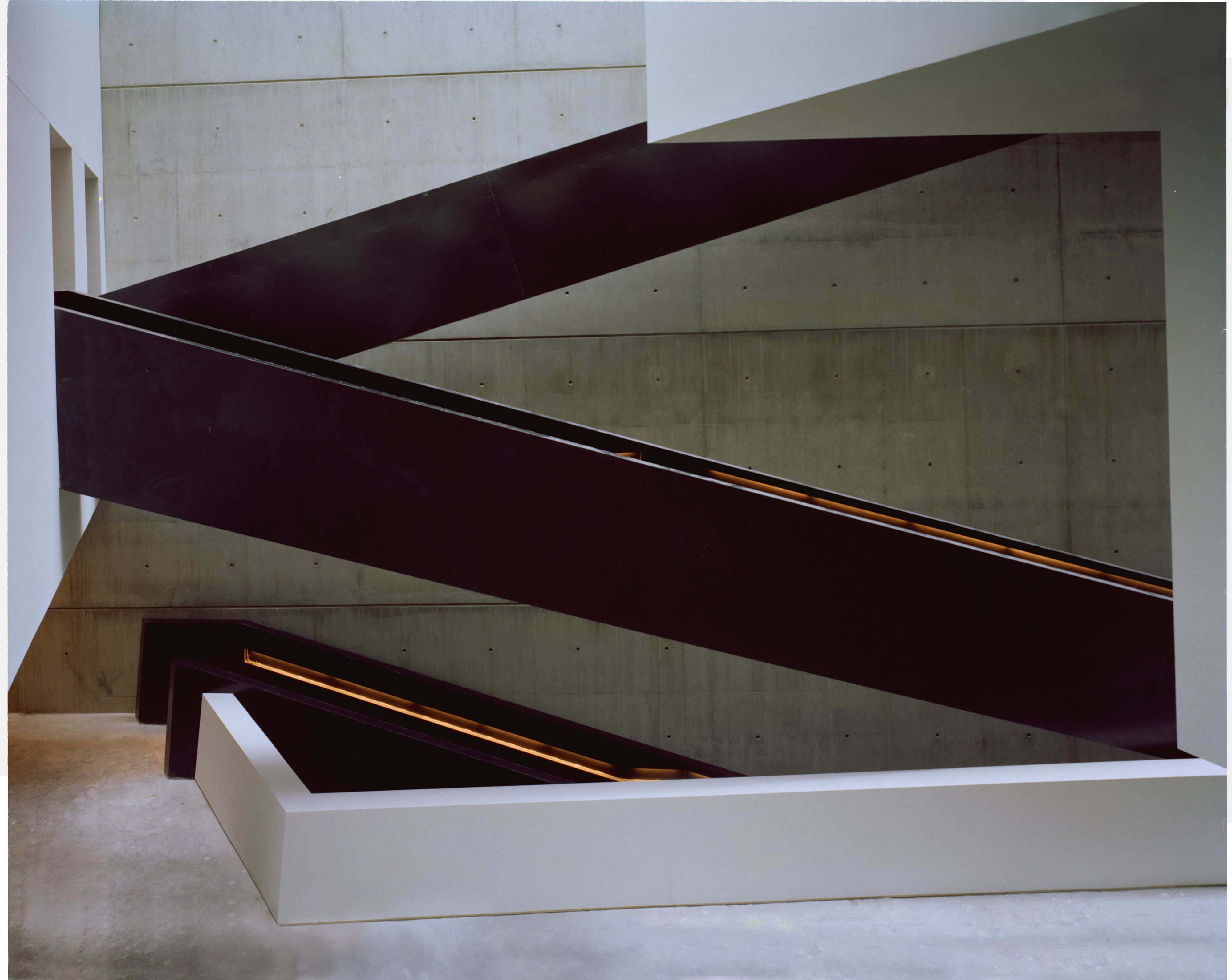Stepping inside the CAC, you are immediately struck by the vast and dramatic lobby, whose zig-zagging stairways and complex volumes appear frozen and fluid at the same time. Echoing and reverberating from afar, Khyam Allami’s generative spatial sound installation, A Relational Music (rehearsal), exposes the underlying organizational logic of Hadid’s architectural vision; in his research, he discovered that, unlike most contemporary art spaces, Hadid’s CAC building had no parallel walls, allowing for a reverberation “more beautiful than any of the great churches or industrial spaces,” as the composer and multi-instrumentalist puts it. His piece is followed, just beyond the exhibition entrance, by Between the Stumble and the Fall, a textile installation that flows from the gallery ceilings to create subtle curves in the otherwise boxy CAC. The work of Andrea Canepa, this seemingly effortless draping of pastel pinks, browns, and blues beguilingly plays on perspective and form, as the human eye’s been trained for centuries, under a hegemonic visual paradigm, to search fora stable, linear horizon. Like Hadid’s architecture — not to mention her paintings, which are also on show — the slanted planes in Canepa’s work, tilted to and fro on printed voile, create an ever-shifting perspective that offers new ways of seeing and perceiving.
